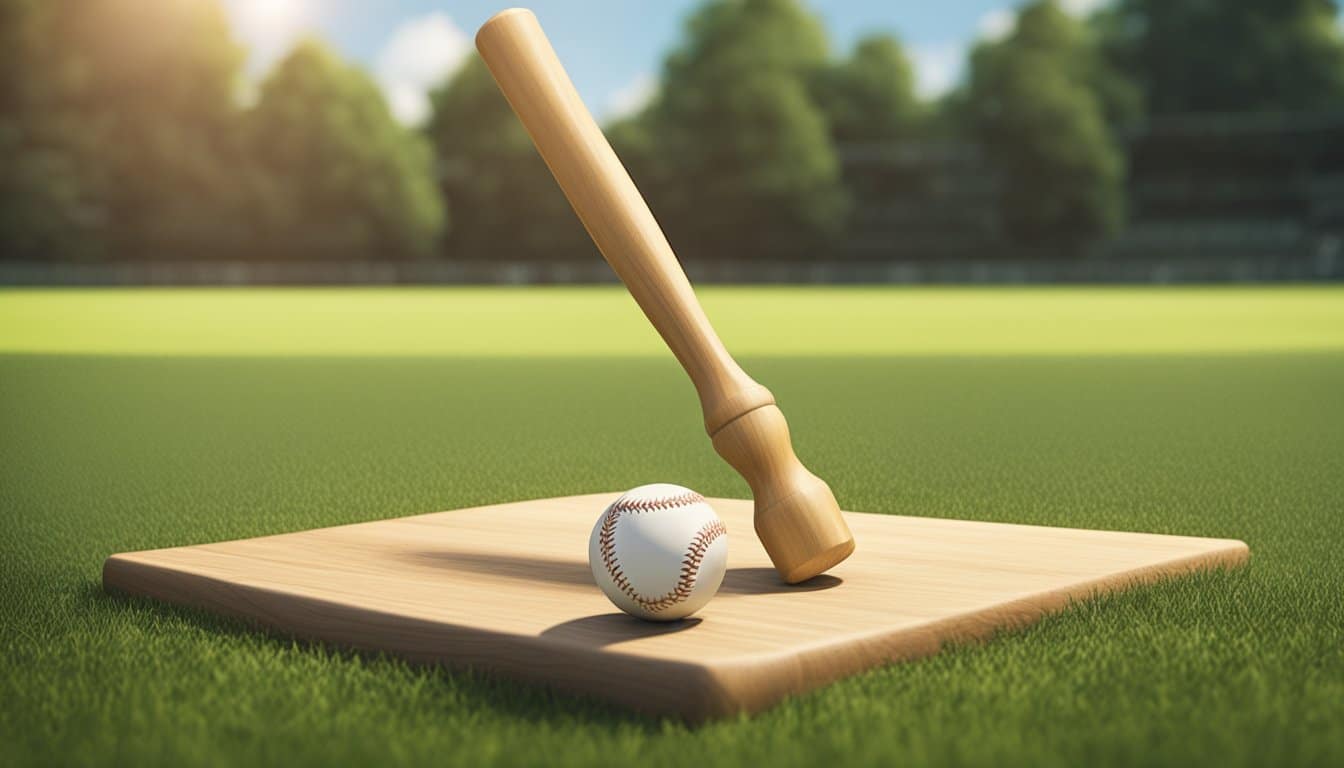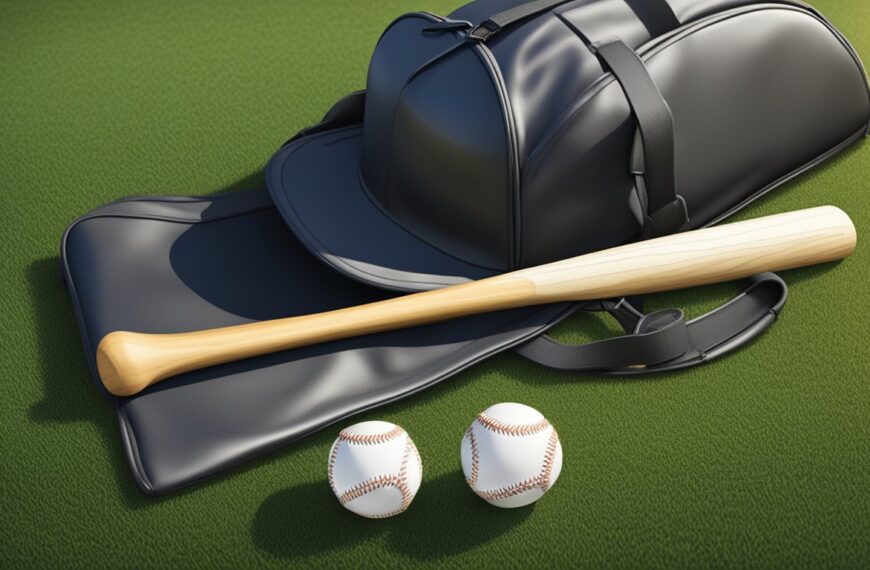Maintaining a batting tee is essential for baseball and softball enthusiasts who wish to improve their hitting skills. A well-kept tee can aid in consistent practice settings and ensure a prolonged lifespan of the equipment. Proper care involves regular cleaning, adjustments, and storage practices that protect the tee from wear and tear. The batting tee serves as both a starting point for beginners learning the fundamentals and a refining tool for advanced players fine-tuning their swing mechanics.
Using a batting tee goes beyond the solo practice sessions; it is a versatile tool that can be incorporated into various drills and practice routines. To get the most out of a batting tee, it is important to select the right type that suits a player’s individual needs and playing style. Regular maintenance not only preserves the quality of the tee but also ensures safety and helps in the development of proper hitting mechanics. Understanding how to effectively set up and adjust the tee can lead to more productive practice sessions and significant improvements in a player’s hitting performance.
Key Takeaways
- Regular maintenance of a batting tee is crucial for effective practice and equipment longevity.
- Choosing the appropriate batting tee and proper setup enhance a player’s hitting development.
- A batting tee is a versatile tool beneficial for both solo practice and team drills.
Understanding Batting Tees
A batting tee is an essential tool for hitters to develop their swing technique and improve their batting consistency.
Types of Batting Tees
Batting tees come in various designs, each with unique characteristics to suit different training needs. The Tanner Tee is popular for its lightweight design and ease of use, featuring a metal base and a flexible rubber top, catering to both amateurs and professionals. The G Tee, another highly regarded model, boasts durability with its sturdy metal construction. Typical tees’ materials include:
- Rubber: Offers flexibility and durability
- Metal: Ensures stability and a strong foundation
Benefits of Using a Batting Tee
Using a batting tee provides multiple advantages. It allows batters to practice hitting without the need for a pitcher, which can lead to increased repetition and focus on form. They also aid in:
- Hand-eye coordination: Improving precision and timing
- Swing mechanics: Refining batting stance and swing path
- Muscle memory: Encouraging consistent swing motion
Key Features: Durability and Adjustability
Two critical features in a batting tee are durability and adjustability. A durable batting tee withstands repeated use and is often characterized by a solid base and resilient ball holder. Adjustability refers to the tee’s ability to accommodate different drills and player heights, a crucial feature for versatile training. The best batting tees offer:
- Height adjustment: To cater to various player sizes and drill types
- Sturdy construction: Ensuring longevity amidst regular and rigorous use
Setting Up Your Batting Tee
Setting up a batting tee correctly can greatly influence a batter’s practice session. A well-positioned and height-adjusted tee helps replicate real pitch locations and enhances swing development.
Proper Placement
The batting tee should be positioned directly over home plate to mirror a real pitch scenario. Portable tees allow for easy movement, while heavy duty tees may need more effort but provide stability. One must ensure the tee aligns with the center of the batter’s box, resembling the position from which the batter would naturally engage with a pitched ball.
Adjusting to the Strike Zone
Utilizing an adjustable tee is crucial for practicing swings through various areas of the strike zone. The tee should be set to a height that corresponds with the batter’s strike zone, which typically ranges from the knees to just above the waist. Adjustments are made by extending or retracting the stem of the tee:
- Lower third: Set between knee and mid-thigh height for practicing low pitches.
- Middle zone: Adjust to belt level for standard pitch height.
- Upper third: Position just above the waist to practice hitting high pitches.
Securing the Tee
To prevent the tee from tipping over during practice, it should be secured to the ground. For portable tees, weighted bags or stakes can be used, especially if practicing on different surfaces. Heavy duty tees usually have a broad, stable base that reduces the risk of toppling but still may require some additional securing, depending on the firmness of the ground and the intensity of the swings.
Developing Hitting Mechanics
https://www.youtube.com/watch?v=ePEsqgMEU6w&embed=true
Optimizing the batting tee routine is crucial for reinforcing proper hitting mechanics. It aids hitters in consistently executing powerful and accurate swings.
Stance and Swing Techniques
Stance should be stable and comfortable, with feet shoulder-width apart for optimal balance. The knees should be slightly bent, allowing for fluid motion during the swing. Muscle memory plays a vital role; thus, repeating the correct stance enhances proper swing mechanics over time.
Swing Mechanics involve a sequence of controlled movements. A compact swing with barrel accuracy ensures the bat path aligns with the incoming ball. Main elements in the swing include:
- Loading the back leg for energy.
- Rotating the hips to transfer this energy.
- Keeping the hands inside the ball to drive the bat’s barrel through the hitting zone.
Hand-Eye Coordination
Improvements in hand-eye coordination enhance a hitter’s ability to track the ball and make contact more consistently. A fundamental drill is alternating between hitting different sized balls on the tee. This practice sharpens focus and precision. Regular feedback is essential to correct any deviations swiftly, making sure that the hitter’s eyes stay on the ball until contact is made.
- Focus Drills: Soft toss variations with color-coded balls.
- Tracking Exercises: Observing the ball from the pitcher’s hand to the point of contact.
Maximizing Power and Speed
For maximizing power and bat speed, progressive resistance training can be incorporated. Start with a lighter bat to establish speed, then gradually move to a heavier bat to build strength. Maintaining a firm grip and full arm extension through the swing are critical for harnessing power efficiently.
Speed and Power Drills include:
Bat Speed:
- Practice swings with a weighted bat sleeve.
- Fast-hand drills to quicken bat movement.
Power:
- Plyometric exercises to enhance explosive strength.
- High-resistance batting practice focusing on driving through the ball.
Balanced execution of these mechanics is fundamental for a hitter to reach optimal performance levels.
Effective Drills and Practice
https://www.youtube.com/watch?v=pzvT71bYw8A&embed=true
Utilizing a batting tee allows batters to focus on precise skills during practice. Specific drills are designed to enhance swings, accuracy, and timing, providing the feedback necessary to make meaningful improvements.
Isolating Specific Skills
-
Step Back Drill: Enhances a batter’s weight transfer and balance.
- Procedure:
- Start with your front foot next to the tee.
- Take a small step back with your front foot before swinging.
- Focus on driving through the ball with your legs and hips.
- Procedure:
-
Contact Point Drills: Increases the understanding of where to make contact with different pitch locations.
- Procedure:
- Place the tee in various positions to simulate inside, middle, and outside pitches.
- Practice swinging and making contact at the appropriate points to fine-tune hitting to opposite fields and various pitch locations.
- Procedure:
Increasing Contact Accuracy
-
Front Toss Drill: Aims to improve a batter’s contact accuracy with a moving ball.
- Procedure:
- A partner softly tosses pitches towards the hitter from in front or from the side.
- The batter focuses on accurate swings by consistently hitting the ball squarely on the tee.
- Procedure:
-
Variable Height Drills: Trains the batter to adjust their swing for pitches at different heights.
- Procedure:
- Adjust the tee to various heights to simulate high, mid, and low pitches.
- Practice making precise contact with the ball at each height level.
- Procedure:
Timing and Rhythm
-
Pause and Hit Drill: Develops a batter’s timing by introducing a momentary pause before the swing.
- Procedure:
- Assume the regular stance and initiate a small pause before initiating the swing.
- Concentrate on maintaining rhythm despite the intentional break in motion.
- Procedure:
-
Soft Toss Timing Drill: Improves the batter’s ability to time the swing with an incoming pitch.
- Procedure:
- A partner tosses the ball softly from a short distance, varying the timing of the toss.
- The batter practices adjusting their swing to connect consistently, regardless of the variation in pitch timing.
- Procedure:
Advanced Techniques and Adjustments
Properly utilizing a batting tee involves not just fundamental practice but also advanced techniques and adjustments tailored to different pitches, specific situations, and varying pitcher styles.
Hitting Different Pitches
Inside Pitch: To train for an inside pitch, position the tee closer to the plate and slightly ahead in the batter’s box. A compact swing with the hands staying close to the body will help in pulling the ball.
Outside Pitch: For an outside pitch, the tee should be placed on the opposite corner of the plate and aligned with the back of the batting box. The batter must focus on extending their arms and aiming for opposite field hitting.
Practicing for Specific Situations
Count Adjustments: Create specific counts such as 0-2 or 3-1 to simulate game conditions and pressure. Adjust swings accordingly, focusing on making contact in defensive counts and driving the ball in hitter’s counts.
Runners on Base: Place the tee to practice hitting behind runners, emphasizing quick decision-making and situational awareness.
Adjusting for Pitcher Styles
Speed Variation: To mimic different pitcher velocities, the batter can vary the pace of their swing. Moving the tee forward simulates faster live pitching, requiring quicker swing adjustments.
Movement: Anticipating pitch movement, batters can adjust the height and angle of the tee. For instance, low for sinkers or raised for high fastballs, encouraging an adaptable swing plane.
Maintenance and Care for Your Tee
https://www.youtube.com/watch?v=XrrBQR17Mec&embed=true
Maintaining your batting tee ensures its longevity and performance. Proper care involves regular cleaning, storage, and inspections to identify when replacement parts are necessary.
Cleaning and Storage
To clean the rubber top and other components of the batting tee, one should use a mild soap and a damp cloth. After wiping it down, make sure to dry it thoroughly to prevent any water damage or mold buildup. For storage, find a cool, dry place away from direct sunlight to prevent the rubber from degrading. It’s advisable to disassemble the tee and store it in a bag or container to protect it from dust and pests.
Inspecting for Wear and Tear
Regular inspections are crucial for the durability of the batting tee. Check all the parts for signs of stress, cracks, or other damages after each use. Particular attention should be given to the rubber top’s flexibility and texture, as it’s frequently in contact with the bat. If any component begins to show noticeable wear, it’s essential to arrange for its timely replacement.
Replacement Parts and Repair
For a batting tee to last, knowing when and where to get replacement parts is vital. Acknowledged brands like Joe Tanner provide easy access to durable replacement parts. Users should refer to the manufacturer’s guidelines for specific part numbers and installation instructions. Keeping a set of common replacement parts on hand, such as the rubber top or base grips, can minimize downtime and ensure that the batting tee is always ready for practice.
Using Your Tee Beyond Solo Practice
Batting tees aren’t just for individual use; integrating them into various training scenarios can significantly enhance skill development and team practice efficiency.
Incorporating into Team Practice
Team practice sessions are vital for collective growth, and incorporating batting tees can cultivate batting skills without the need for pitcher participation. Coaches may set up multiple tees with varying heights and locations to simulate different pitch types. This allows players to:
- Work on hitting pitches in specific zones.
- Rotate through stations, maximizing the number of swings in a practice session.
Coaching with Batting Tees
When coaching, using batting tees can be instrumental as a training aid. It allows coaches to observe a player’s swing mechanics closely and provide instant feedback. Key coaching points include:
- Ensuring players maintain a balanced stance.
- Focusing on the point of contact to foster consistent hitting.
Enhancing Personal Training Sessions
For personal development, batting tees are invaluable in refining batting skills outside team environments. Players can focus on specific skills such as:
- Hitting to the opposite field: Positioning the tee and practicing driving the ball to the opposite field.
- Power hitting: Adjusting tee height for optimal launch angles conducive to home runs.
By integrating batting tees into team practice, coaching, and personal training sessions, players and coaches can target the enhancement of batting skills in a controlled and focused manner.
Choosing the Right Batting Tee
When selecting a batting tee, one should balance several factors such as durability and personal preference to find the best option.
Factors to Consider
To ensure satisfaction with a batting tee, it’s important to evaluate the following traits:
- Durability: The materials used in a tee can indicate how long it will withstand regular use. Heavy-duty tees often feature a steel or high-density polyethylene base, making them more resilient.
- Portability: A tee that is lightweight and breaks down easily enables players to practice anywhere.
- Adjustability: A good batting tee will offer height adjustment features to accommodate different player sizes and hitting styles.
Personal Needs and Preferences
Each player should consider their specific use case:
- Skill Level: Beginners might prefer a basic model, while seasoned players could benefit from more advanced features like adjustable height and base weight.
- Frequency of Use: For those practicing daily, investing in a tee with higher durability, like the Tanner tee, is advisable.
- Mobility Requirements: For players who travel often, a portable tee like the G Tee is a practical choice.
Product Reviews and Recommendations
When looking for the best batting tee, it helps to refer to community and expert reviews. Here are some respected options:
- Tanner Tees: Known for their durability and adjustable height mechanism. Ideal for players at all levels.
- G Tee: Praised for its portability and sturdy design, making it an excellent option for athletes who are on the go.
Research and product testing by trusted sources can guide one towards a tee that excels in the necessary aspects.
Frequently Asked Questions
The following frequently asked questions provide specific information on maintaining and caring for your batting tee to ensure its longevity and performance.
How can I ensure the longevity of my batting tee with proper maintenance?
Regularly clean your batting tee with mild soap and water to prevent dirt buildup. Inspect all components for signs of wear and tear before and after each use, and tighten any loose screws or bolts.
What are the steps for replacing parts on a batting tee, such as the Tanner Tee?
To replace parts on a Tanner Tee, first identify the worn component. Unscrew the defective part and replace it with a new one from the manufacturer, following their instructions to ensure correct installation.
Can you provide tips for preventing wear and tear on batting tees used for baseball practice?
Minimize wear and tear by using the batting tee on grass or turf to reduce abrasion. Avoid exposure to extreme temperatures and sunlight for prolonged periods, and use only approved baseballs or softballs.
What is the correct way to position a batting tee to improve hitting skills?
The batting tee should be positioned at the hitter’s lead hip to practice hitting the ball out in front. To work on inside and outside pitches, adjust the tee accordingly to replicate pitch locations.
How often should the tee topper be replaced to maintain optimal performance?
The tee topper should be replaced once it shows significant wear or no longer holds the ball securely. This is typically after a few seasons of regular use, but may vary based on frequency and intensity of practice.
Are there specific storage recommendations for batting tees to prevent damage when not in use?
Store your batting tee in a cool, dry place away from direct sunlight when not in use. If the tee is collapsible, break it down to reduce space and protect its structure. Avoid placing heavy items on top of the tee to prevent deformation.














